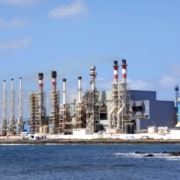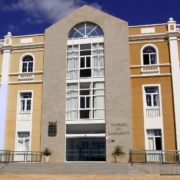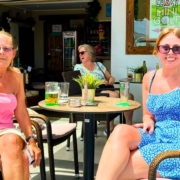Water cuts have become a tiresome part of everyday life for thousands of Lanzarote residents, and anger is growing at the disparity between the resorts and the villages.
In a grocery shop in Arrecife there’s only one topic of conversation. “¿Tienes agua? (“Have you got water?”) asks a middle-aged lady to another shopper in the queue. Others chime in, saying that they’ve been without water for various hours, while others have had no problems. A young lad lugging two big bottles of drinking water says their water came back on an hour ago, but his mum has sent him out for supplies “just in case”.
Scenes like this have been regular occurrences in Lanzarote’s inland towns and villages but are not generally seen in its capital. The island’s rural areas have suffered cuts in supply almost continually over the last year, but more recently the problem appears to be extending to the capital, Arrecife, and areas such as Puerto del Carmen.
In October, a power cut at the desalination plant meant that 32 towns and villages were left without water for periods of up to a day or more. Although the island’s water supplier, Canal Gestión, provides daily information about areas where cuts may be expected, many complain that it is too general and often inaccurate.
Reasons given for the cuts include power cuts at the desalination plant, the breakdown of desalination equipment and leaks in the mains system, but beneath it all is the clear message that the island’s water supply system is rickety and working at the very limit of its capacity, with hardly any water reserves available at any given time. Almost 60% of all water produced on Lanzarote is lost, due to leaks and unauthorised consumption.
EMPTY THE POOLS!
Tourism is also a key factor in the water issue. Aside from the showers and baths in each room, the industry consumes vast amounts of water in hotel kitchens, laundries, pools and gardens. It is estimated that a tourist in the resorts consumes three times as much water on a daily basis as a resident.
Yet tourism remains the basis of Lanzarote’s economy. Aware of the negative repercussions that cutting water to the hotels could have, authorities have protected supplies to the resorts. Until recently, the same protection has usually applied to Arrecife, the island’s biggest centre of population and an important generator of income.
It has been the outlying rural areas that have borne the brunt of water cuts, and the island’s agricultural sector has been severely affected, with farmers unable to guarantee irrigation for their crops. In the demonstrations against mass tourism in April, protesters carried signs saying, “Empty the swimming pools so we can water our potatoes”.
A HISTORY OF MISMANAGEMENT
In 2009, Lanzarote’s publicly owned water utility, Inalsa, was taken into administration with debts of over €17 million. The scale of mismanagement by the Water Consortium – a body formed mostly by politicians from the island’s councils – was so shocking that judges ordered an embargo on the assets of the officials who had been in charge of it.
As a result, in 2013, a contract was signed with the Madrid-based business Canal Gestión, who assumed the debts of the company, promising a new future for the island’s water supply and, incidentally, getting the politicians off the hook. Canal Gestión has been supplying most of the water on the island ever since, subject to agreements with the Water Consortium.
However, the relationship between Canal Gestión and the Water Consortium has recently become strained, as the water company calls for increased water rates to cover costs. Meanwhile, the Cabildo has recently threatened to suspend the contract with Canal Gestión due to “breach of contract”.











Leave a Reply
Want to join the discussion?Feel free to contribute!